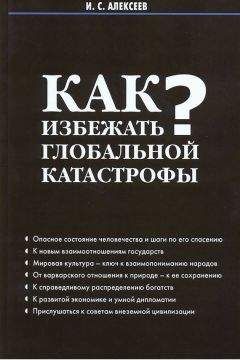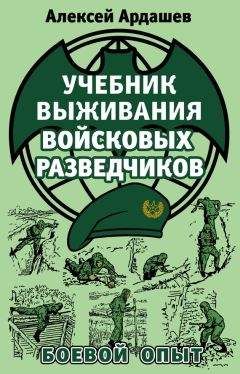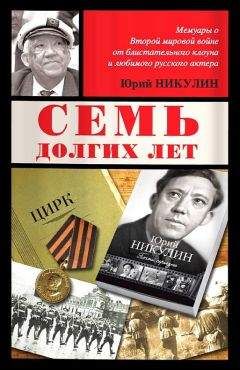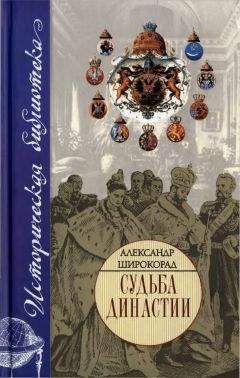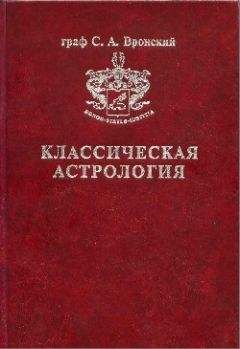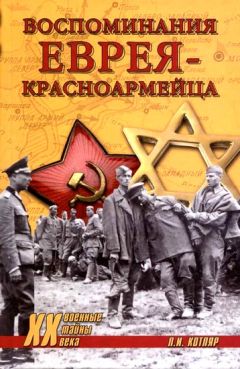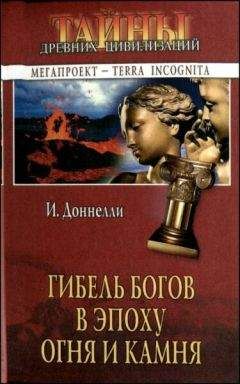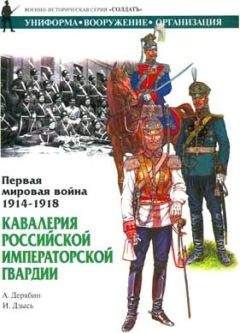Юрий Слёзкин - Эра Меркурия

Все авторские права соблюдены. Напишите нам, если Вы не согласны.
Описание книги "Эра Меркурия"
Описание и краткое содержание "Эра Меркурия" читать бесплатно онлайн.
5
Norman O. Brown. Hermes the Thief: The Evolution of a Myth. Madison: University of Wisconsin Press, 1947; Marcel Detienne and Jean-Pierre Vernant, Cunning Intelligence in Greek Culture and Society. Hassocks, Sussex: Harvester Press, 1978; Laurence Kahn. Hèrmus passe ou les ambiguités de la communication. Paris: François Maspero, 1978; W. B. Stanford. The Ulysses Theme: A Study in Adaptability of a Traditional Hero. Dallas: Spring Publications, 1992.
6
George Gmelch and Sharon Bohn Gmelch. Commercial Nomadism: Occupation and Mobility among Travellers in England and Wales, in Rao, The Other Nomads, 134; Matt T. Salo. The Gypsy Niche in North America: Some Ecological Perspectives on the Exploitation of Social Environments, Rao, The Other Nomads, 94; Judith Okely. The Traveller-Gypsies. Cambridge: Cambridge University Press, 1983, 58–60; Curtin, Cross-Cultural Trade, 70; Clifford Geertz. Peddlers and Princes: Social Change and Economic Modernization in Two Indonesian Towns. Chicago: University of Chicago Press, 1963, 43–44; Mark Zborowski and Elizabeth Herzog. eds. Life Is with People: The Culture of the Shtetl. New York: Schocken Books, 1952, 62; Armstrong, Nations before Nationalism, 42; Daniel J. Elazar. The Jewish People as the Classic Diaspora, in Gabriel Sheffer, ed. Modern Diasporas in International Politics. London: Croom Helm, 1986, 215.
7
Brian L. Foster. Ethnicity and Commerce // American Ethnologist 1, № 3 (August 1974): 441. See also Cristina Blanc Szanton. Thai and Sino-Thai in Small Town Thailand: Changing Patterns of Interethnic relations, in Lim and Gosling, eds., The Chinese in Southeast Asia 2: 99–125.
8
Benjamin Nelson. The Idea of Usury: From Tribal Brotherhood to Universal Otherhood. Chicago: University of Chicago Press, 1969; Max Weber. Ancient Judaism. Glencoe, 111: Free Press, 1952: 338–345; Curtin, Cross-Cultural Trade, 5–6; Alejandro Portes. Economic Sociology and the Sociology of Immigration: A Conceptual Overview, in Alejandro Portes, ed. The Economic Sociology of Immigration: Essays on Networks, Ethnicity, and Entrepreneurship. New York: Russell Sage Foundation, 1995, 14; L. A. Peter Gosling. Changing Chinese Identities in Southeast Asia: An Introductory Review, in Lim and Gosling, The Chinese in Southeast Asia 2: 4. Очень хорошее обсуждение, включающее две приведенные выше цитаты (и многие другие), содержится в работе Mark Granovetter. The Economic Sociology of Firms and Entrepreneurs, in Portes, The Economic Sociology of Immigration.
9
Donald L. Horowitz. Ethnic Groups in Conflict. Berkeley and Los Angeles: University of California Press, 1985, 119; Casajus, Crafts and Ceremonies, 303; de Vos and Wagatsuma, Japan’s Invisible Race, 231; Werner Sombart. The Jews and Modern Capitalism. London: T. Fisher Unwin, 1913, 138; Gmelch, Groups That Don’t Want In, 322–323.
10
Joseph C. Berland, Kanjar Social Organization, in Rao, The Other Nomads, 253; Gmelch, “Groups That Don’t Want In”, 320–321; Anne Sutherland. The Body as a Social Symbol among the Rom, in John Blacking, ed. The Anthropology of the Body. London: Academic Press, 1977, 376.
11
Тайна Израиля: “Еврейский вопрос” в русской религиозной мысли конца XIX – первой половины XX в. (СПб.: София, 1993), 251. Все переводы без атрибуции сделаны автором.
12
Yuri Slezkine. Naturalists versus Nations: Eighteenth-Century Russian Scholars Confront Ethnic Diversity // Representations 47 (Summer 1994): 174, 180–182; Max Weber. Ancient Judaism. Glencoe, 111: Free Press, 1952, 351–355.
13
Vaughn, Caste Systems, 77–79; Sutherland, The Body, 378–380; Okely, The Traveller-Gypsies, 83–85; Axelrod, А Social and Demographic Comparison, 51–54, 61–62.
14
Матфей 15:11.
15
См. в особенности: Sutherland, The Body, and Luhrmann, The Good Parsi, 102; Max Weber. The Sociology of Religion. Boston: Beacon Press, 1963, 109; David Nemeth. Gypsy Taskmasters, Gentile Slaves, in Matt T. Salo, ed. The American Kalderas: Gypsies in the New World. Hackettstown, N. J.: Gypsy Lore Society, North American Chapter, 1981, 29–41.
16
Cм.: Okely, The Traveller-Gypsies, 8–19; and Paul Wexler, The Case for the Relexification Hypothesis in Romani, in Julia Horvath and Paul Wexler, eds. Relexification in Creole and Non-Creole Languages. Wiesbaden: Harrassowitz, 1997, 100–161. Очень полезный обзор см. в: Yaron Matras. Para-Romani Revisited, in Yaron Matras. ed. The Romani Element in Non-Standard Speech. Wiesbaden: Harrassowitz, 1998, 1–27.
17
Основные аргументы (в указанном порядке) см. в работах: (1) Sarah Grey Thomason and Terrence Kaufman. Language Contact, Creolization, and Genetic Linguistics. Berkeley and Los Angeles: University of California Press, 1988), 103f; (2) Ian F. Hancock. The Social and Linguistic Development of Angloromani // Working Papers in Sociolinguistics, № 38 (December 1977): 1–42; also Ian F. Hancock. Is Anglo-Romanes a Creole? // Journal of the Gypsy Lore Society 49, № 1–2 (1970): 41–44; (3) Norbert Boretzky and Birgit lgla. Romani Mixed Dialects, in Peter Bakker and Maarten Mous, eds. Mixed Languages: Fifteen Case Studies in Language Intertwining. Amsterdam: IFOTT, 1994, 35–68; and Norbert Boretzky. Der Romani-Wortschatz in den Romani-Misch-Dialekten (Pararomani), in Matras, The Romani Element, 97–132; (4) Peter Bakker and Maarten Mous. Introduction, and Peter Bakker. Michif, The CreeFrench Mixed Language of the Métis Buffalo Hunters in Canada, in Bakker and Mous, Mixed Languages, 1–11 and 13–33; and (5) Jakob Ladefoged. Romani Elements in Non-Standard Scandinavian Varieties, in Matras, The Romani Element, 133–164.
18
Olesen, Peddling in East Afghanistan, 36; Bollig, Ethnic Relations, 204, 214.
19
Casajus, Crafts and Ceremonies, 308–309; Bollig, Ethnic Relations, 214; Hancock, The Social and Linguistic Development, 29; Anthony P. Grant, Shelta: The Secret Language of Irish Travellers Viewed as a Mixed Language, in Bakker and Mous, Mixed Languages, 135–136; R. A. Stewart Macalister. The Secret Languages of Ireland, with Special Reference to the Origin and Nature of the Shelta Language. Cambridge: Cambridge University Press, 1937, 132.
20
Цитируется в Macalister, The Secret Languages, 134–135.
21
Solomon A. Birnbaum. Yiddish: A Survey and Grammar. Manchester: Manchester University Press, 1979, 76, 106.
22
Max Weinreich. History of the Yiddish Language. Chicago: University of Chicago Press, 1980, 95–124.
23
Paul Wexler. The Ashkenazic Jews: A Slavo-Turkic People in Search of a Jewish Identity. Columbus: Slavica, 1993, 59–60 and passim; Dell Hymes. Introduction, in Dell Hymes, ed. Pidginization and Creolization of Languages. Cambridge: Cambridge University Press, 1971, 76, 77–78, 86–87 (цитата взята со с. 86); см. также: Іап F. Hancock. Recovering Pidgin Genesis: Approaches and Problems, in Albert Valdman ed. Pidgin and Creole Linguistics. Bloomington: Indiana University Press, 1977, 277–294, esp. 289–290, and Ian F. Hancock, Appendix: Repertory of Pidgin and Creole Languages, там же, 385.
24
Birnbaum, Yiddish, 82 and passim; Weinreich, History of the Yiddish Language, 29, 350–351, 599f and passim; Joshua A. Fishman. Yiddish: Turning to Life. Amsterdam: John Benjamins, 1991, 19–35, 189–201.
25
О категории “смешанных языков” см.: Bakker, Michif, 25–26. Нет сомнения, что с точки зрения грамматического строя и словарного запаса идиш – германский язык; уникальными (среди германских языков) являются история его возникновения и функционирование.
26
Matras, Para-Romani Revisited, 21; Yaron Matras. The Romani Element in German Secret Languages, in Matras, The Romani Element, 193–194; Hancock, “Recovering Pidgin Genesis”, 290.
27
Weinreich, History of the Yiddish Language, 199, 605.
28
Luhrmann, The Good Parsi, 47–59.
29
Horowitz, Ethnic Groups in Conflict, 168–169.
30
Michael J. Casimir In Search of Guilt: Legends on the Origin of the Peripatetic Niche, in Rao, The Other Nomads, 373–390; Olesen, Peddling in East Afghanistan, 36; Okely, The Traveller-Gypsies, 216.
31
Lancaster and Lancaster, The Function of Peripatetics, 319.
32
Van den Berghe, The Ethnic Phenomenon, 143. См. также: Bonacich, А Theory of Middleman Minorities, 586.
33
О “корпоративном родстве” см.: William G. Davis. Social Relations in a Philippine Market: Self-Interest and Subjectivity. Berkeley and Los Angeles: University of California Press, 1973, 199–200; и Granovetter, The Economic Sociology, 143–146.
34
Sutherland, The Body, 377–378; Matt T. Salo, Gypsy Ethnicity: Implications of Native Categories and Interaction for Ethnic Classification, 78–79; Ignacy-Marck Kaminski. The Dilemma of Power: Internal and External Leadership. The Gypsy-Roma of Poland, in Rao, The Other Nomads, 332–334.
35
Bharati, The Asians in East Africa, 42, 149; van den Berghe, The Ethnic Phenomenon, 147–153.
36
Van der Laan, The Lebanese Traders, 228–230, 241–244. Цитата взята со с. 229.
37
Ivan Н. Light. Ethnie Enterprise in America: Business and Welfare among Chinese, Japanese, and Blacks. Berkeley and Los Angeles: University of California Press, 1972, 45–61, 81–100; Linda Y. C. Lim. Chinese Economic Activity in Southeast Asia: An Introductory Review” in Lim and Gosling, The Chinese in Southeast Asia, 1: 5; Eitzen, Two Minorities, 230; Pan, Sons of the Yellow Emperor, 111–127.
38
Granovetter, The Economic Sociology, 143; see also Bonacich, A Theory of Middleman Minorities, 586–587; and van den Berghe, The Ethnic Phenomenon, 139–144.
39
Цитируется в: Albert S. Lindemann. Esau’s Tears: Modern Anti-Semitism and the Rise of the Jews. Cambridge: Cambridge University Press, 1997, 5.
40
Luhrmann, The Good Parsi, 50.
41
Berland, Kanjar Social Organization, 249; Gmelch, Groups That Don’t Want In, 314; Maurice Samuel. The World of Sholom Aleichem. New York: Alfred A. Knopf, 1943)], 131.
42
Detienne and Vernant, Cunning Intelligence, 47–48.
43
Berland, Kanjar Social Organization, 249.
44
Gmelch, Groups That Don’t Want In, 314.
45
Jacob Katz. Out of the Ghetto: The Social Background of Jewish Emancipation, 1770–1870. Cambridge: Harvard University Press, 1973, 22.
46
Сравни: Gellner, Nations and Nationalism, 103–109; Kotkin, Tribes, passim.
47
Luhrmann, The Good Parsi, 91–95, 119; Jamsheed K. Choksy, Evil, Good, and Gender: Facets of the Feminine in Zoroastrian Religious History. New York: Peter Lang, 2002, 109.
48
Dario A. Euraque. The Arab-Jewish Economic Presence in San Pedro Sula, the Industrial Capital of Honduras: Formative Years, 1880s–1930s”, in Ignacio Klich and Jeffrey Lesser, eds. Arab and Jewish Immigrants in Latin America: Images and Realities. London: Frank Cass, 1998, 95, 109; Clark S. Knowlton. The Social and Spatial Mobility of the Syrian and Lebanese Community in Sao Paulo, Brazil, in Hourani and Shehadi, The Lebanese in the World, 292–293, 302–303; David Nicholls. Lebanese of the Antilles: Haiti, Dominican Republic, Jamaica, and Trinidad, in Hourani and Shehadi, The Lebanese in the World, 339–360; Crowley, The Levantine Arabs, 139; Nancie L. Gonzalez. Dollar, Dove, and Eagle: One Hundred Years of Palestinian Migration to Honduras. Ann Arbor: University of Michigan Press, 1992, 93–100; Amy Chua. World on Fire: How Exporting Free Market Democracy Breeds Ethnic Hatred and Global Instability. New York: Doubleday, 2003, 116, 149–150.
Подписывайтесь на наши страницы в социальных сетях.
Будьте в курсе последних книжных новинок, комментируйте, обсуждайте. Мы ждём Вас!
Похожие книги на "Эра Меркурия"
Книги похожие на "Эра Меркурия" читать онлайн или скачать бесплатно полные версии.
Мы рекомендуем Вам зарегистрироваться либо войти на сайт под своим именем.
Отзывы о "Юрий Слёзкин - Эра Меркурия"
Отзывы читателей о книге "Эра Меркурия", комментарии и мнения людей о произведении.













